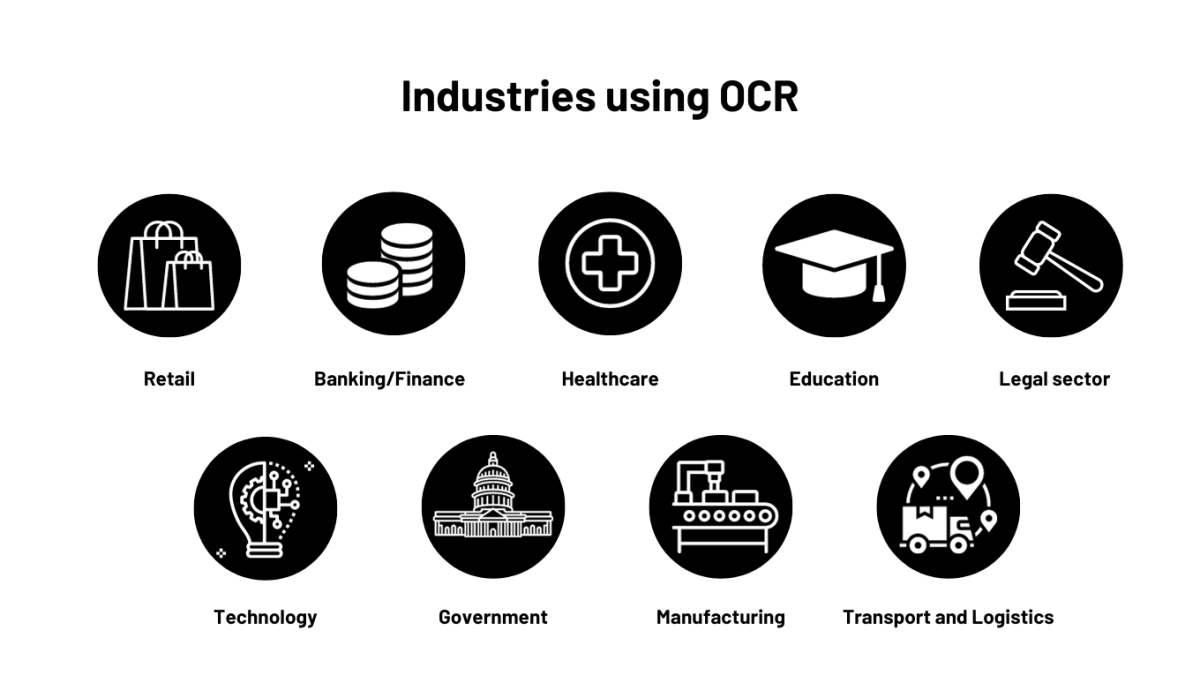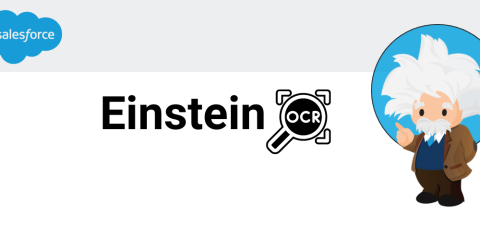9 industries that benefit from OCR: use cases and applications for automated data capture

OCR technology is used in many areas. This is due to the wide range of possibilities and numerous benefits that OCR text recognition and automated data capture offer. To learn more about the benefits of OCR, click here.
This article focuses on specific use cases of Optical Character Recognition and industries that use and benefit from this efficient technology every day.
To find out more about OCR technology and how it works, click here.
Use cases and features of OCR technology
OCR has become an integral part of modern document management systems, converting paperbased documents into editable and digital formats.
The versatility of OCR applications is a major advantage. OCR is widely used in both business and consumer applications. Here is a list of some of the applications and features of this technology:
- Digitisation of scanned documents and letters
- Scan and digitise receipts and invoices for faster reimbursement
- Efficient data management makes documents easier to find and retrieve:
- Scanned documents are easier to search because a full text search can be used to find any part of a document with a specific set of words
- Documents can be quickly and easily retrieved from the archive or cloud - they can then be edited there using a word processor
- Efficient storage, archiving and editing of documents and files
- Digitisation of archives
- Editing of scanned or photographed text
- Automatic document and data entry into a database
- Automated scanning and reading of barcodes on products using OCR and retrieval of required information from databases
- Automatic reading product labels, such as pharmaceutical labels, to extract meaningful information that can be analysed and processed by computer systems
- Number plate recognition: OCR is also used to analyse number plates and extract information such as registration numbers
- Passport verification: OCR can be used to quickly and efficiently verify the authenticity of passports, visas and other travel documents
- Reading utility meters: OCR is used to read electricity, gas and water meters in order to bill customers for the correct amounts
- Social media: When a company/brand is mentioned in social media posts, OCR can be used to identify and classify those posts
With such a wide range of applications and features, such as digitisation, effective archiving, easier searchability and efficient data management of all documents, OCR is particularly important for organisations with high paper volumes like banks, hospitals or retail chains.
Applications and benefits of OCR for various industries
With the growth of data volumes and the need to convert more and more unstructured data into structured and useful information, OCR technology offers efficient and customised solutions and benefits to companies in a wide range of industries.
 X
X
Retail: In this industry, OCR is used to scan barcodes, credit card information or receipts, for example, and to efficiently manage stock levels.
Automated capture of product information: Many stores use OCR to automatically read product labels and compare them with product catalogues. This can be used, for example, to record which items are currently on the shelf and which are out of stock.
Banking and finance: By scanning and digitising all customer documents, such as transaction receipts, they can be processed quickly and efficiently. This, in turn, improves customer service, internal workflows and business processes. OCR technology can also be used to automatically read cheques and bank statements and verify signatures. Furthermore, large amounts of data are analysed in order to make informed and data-driven decisions about customer accounts, investments or loans, for example, using OCR.
Healthcare: Patient records and prescriptions are digitised using OCR, making it easier and faster to manage, archive, process and access relevant data. It also automates the entry of patient data, reducing steps and errors.
Education: Scanning and digitising educational materials, organising/archiving and ensuring accessible learning resources is efficiently enabled by OCR text recognition.
Legal: In this industry, OCR is used to quickly digitise legal documents and contracts, which also makes document management much easier. By scanning documents and contracts, law firms, for example, can also ensure that they are legible and accurate.
Technology: OCR is used in many areas of IT, including image analysis, speech recognition and data mining.
Government: OCR can be used effectively to scan and digitise official documents such as birth certificates or driving licences.
Manufacturing: Manufacturing facilities often need to scan invoices or purchase orders, for which OCR is used. Serial numbers of product components can also be read as they move along an assembly line.
Transport and logistics: OCR is used to automatically capture shipping labels and keep track of stock levels.
In addition to these industries, there are many others that benefit from OCR. Accountancy firms, for example, process large amounts of data in a variety of formats. Documents such as invoices or tax returns are better managed with OCR. Approval processes for business expenses are also improved and faster. In addition, automated data capture using OCR enables HR departments to update pay slips or payrolls and speeds up the onboarding process for new employees.
Conclusion
It is clear that OCR and automated data capture is an essential component in the digital transformation of a wide range of industries.
OCR technology offers numerous benefits across many industries and opens up new possibilities for effective, automatic and intelligent data processing. It eliminates the need for tedious searching and retrieval of specific information and data. Errors are reduced and efficiency is greatly increased. These are useful benefits for companies in all sectors, such as retail, healthcare and the legal sector. This is also due to the applications and features of OCR technology.
With REEDR you get an efficient OCR software solution for automated, accurate and fast data capture.
Do you have any questions about Optical Character Recognition or would you like more information? Would you like to find out more about our OCR solution REEDR for your Salesforce CRM? Then contact us directly here.
